001: The
Problem Statement
How might we help discouraged youth build emotional capacity for climate action?
002:
Secondary Research
What is climate grief? Why do we care?
Climate grief is "the grief felt in relation to experienced or anticipated ecological losses, including the loss of species, ecosystems, and meaningful landscapes due to acute or chronic environmental change."
SourceThese feelings are incredibly common amongst youth. In a study of 10,000 youth in 10 countries by the University of Bath:
45%
said their feelings about climate change negatively affected their daily life and functioning.76%
think that the future is frightening.83%
think people have failed to take care of the planet.Not only does this threaten the mental health and wellbeing of youth, but also could lead to them distancing themselves from the problem, disengaging from, or dismissing it.
003:
Primary Research
What are youth saying about climate grief?
To further understand how this problem is impacting youth, our team conducted 4 interviews. We uncovered 4 major themes.
- None of the participants have discussed their climate grief with others.
- 3 out of 4 participants said that climate anxiety has made it hard for them to stay motivated in the fight against climate change.
- None of the participants are familiar with resources or communities working to address climate grief.
- Half of the participants feel unsure about whether their actions are impactful.
A participant said:
“I do what I can for the climate like recycle or use reusable bags, but I can’t help but feel like my actions are so small and not impactful.”
004: The
Final Idea
A platform to share stories and experiences
Our platform shares stories and experiences of when people feel climate grief in witty and relatable ways to normalize these emotions, while providing additional context for learning. Users are encouraged to share their own stories to build a growing repository of stories. These four stories shown are from our interview participants.
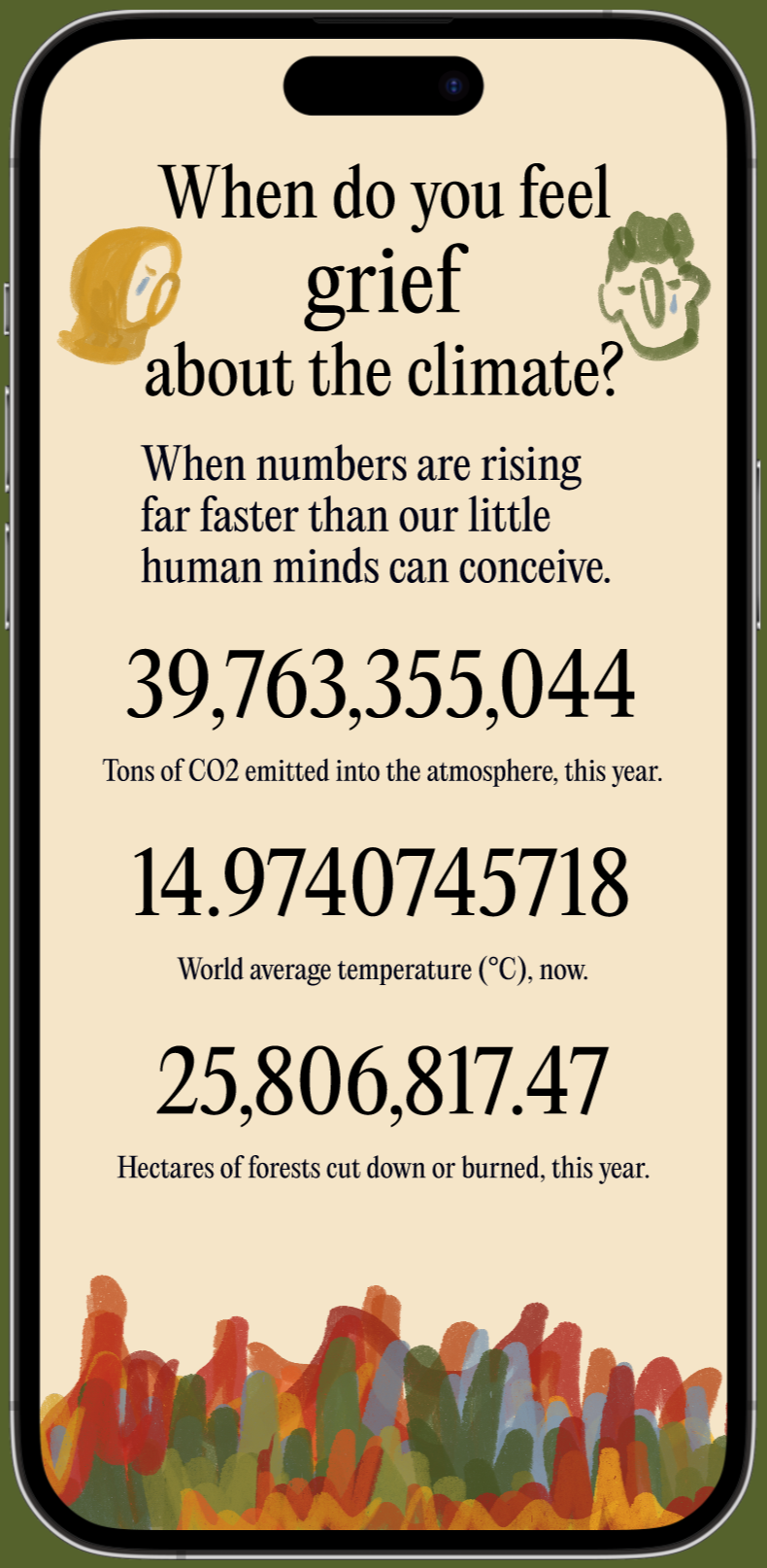
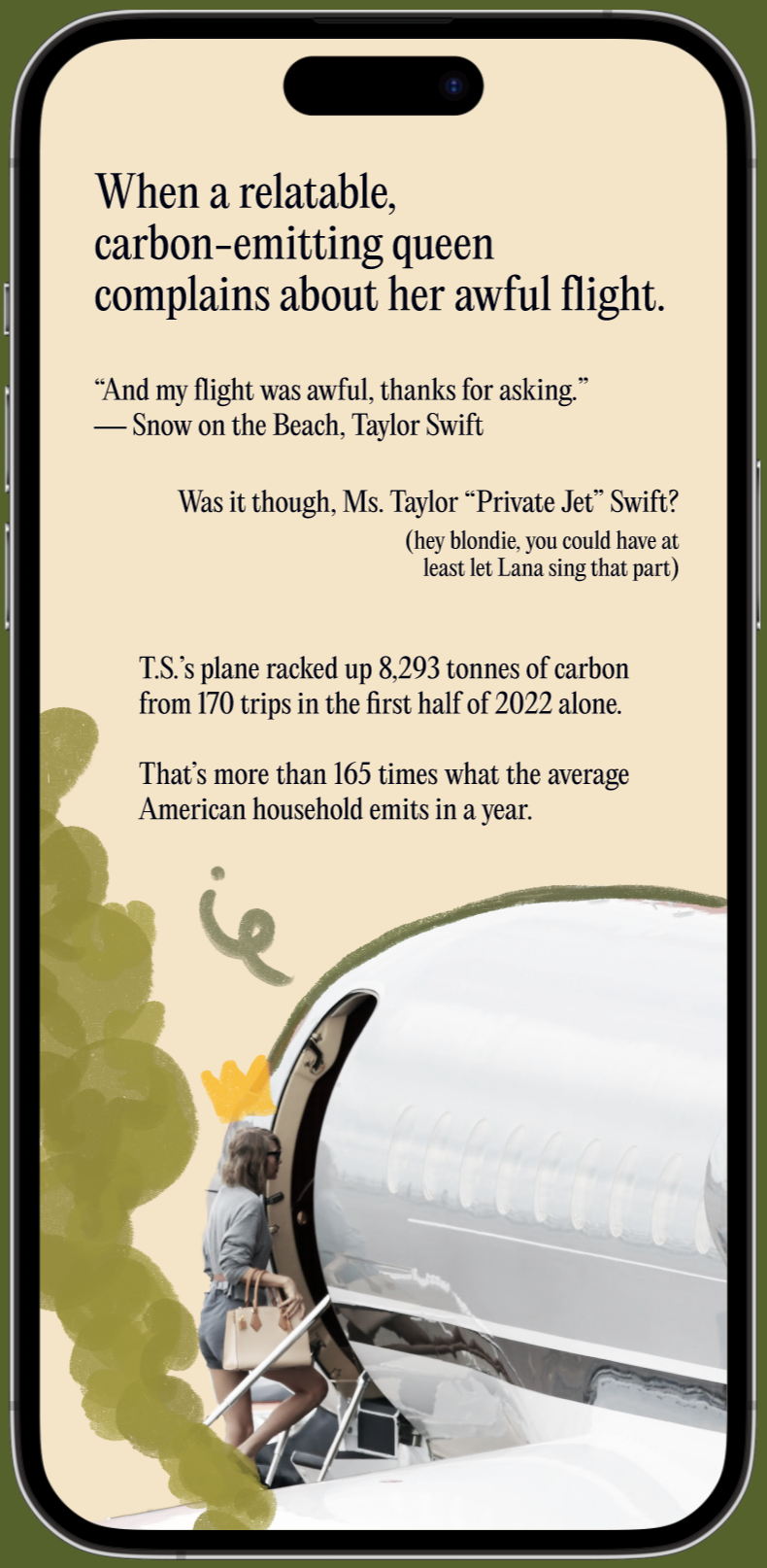
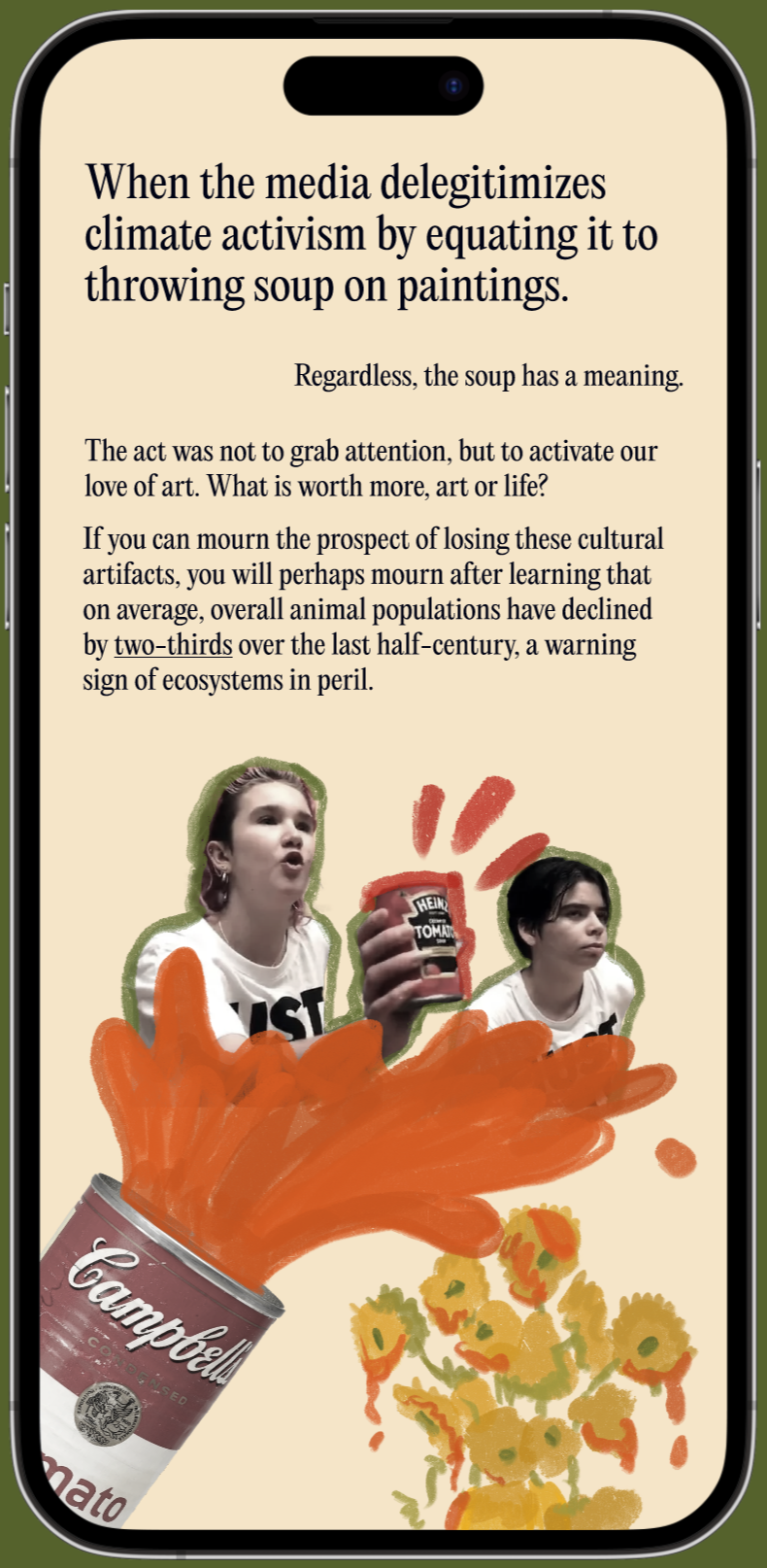
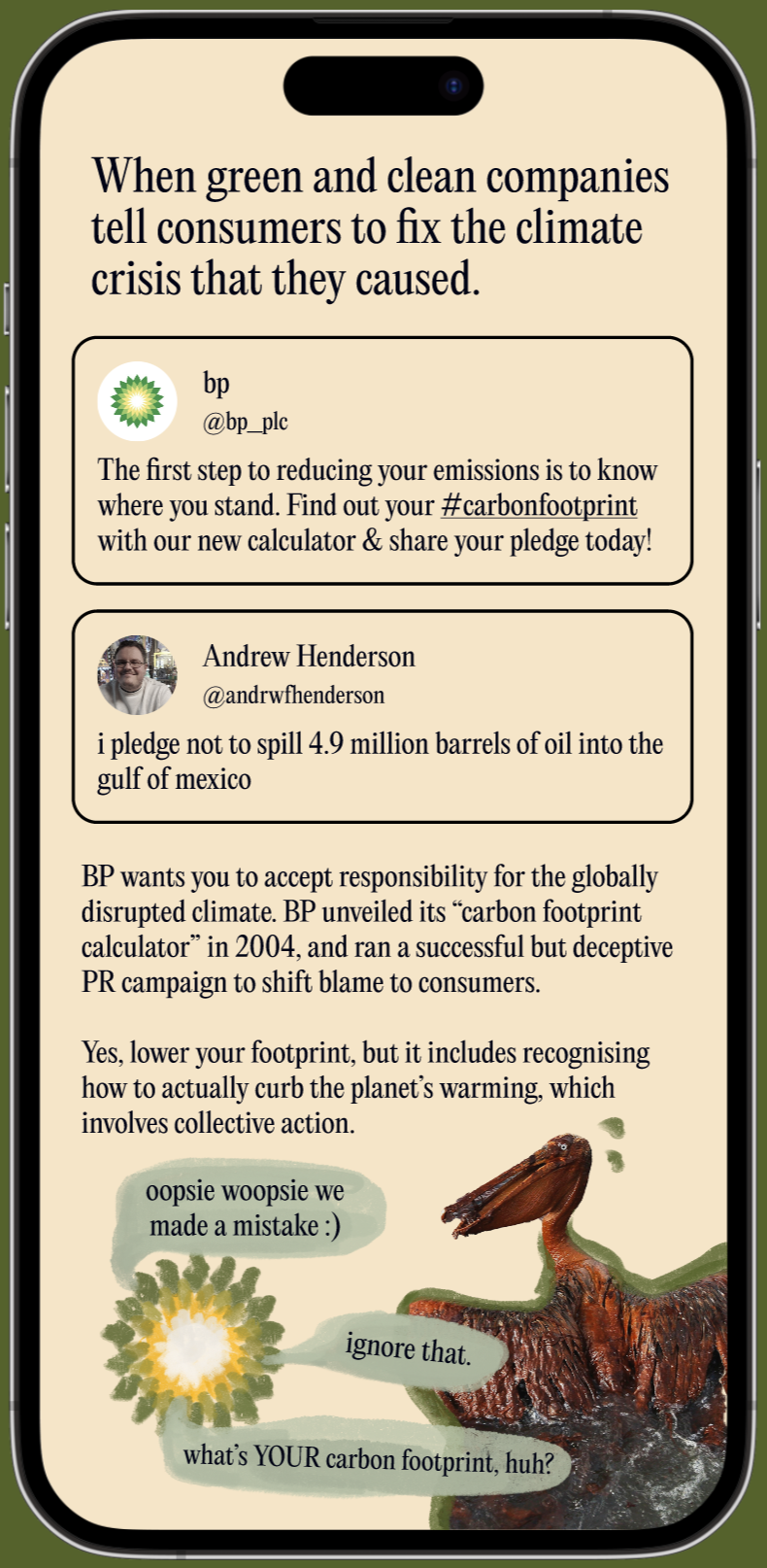
A platform to find communities and resources addressing climate grief
After viewing stories, users are invited to take an assessment to reflect on their own goals, values, and approach to activism. This assessment is designed to help users understand their role in addressing climate grief and to match them to a personalized selection of communities. By linking users to one of the many communities working to address climate grief based on their individual values, needs, and personalities, their climate grief can be transformed into other forms like climate optimism or radical imagination.
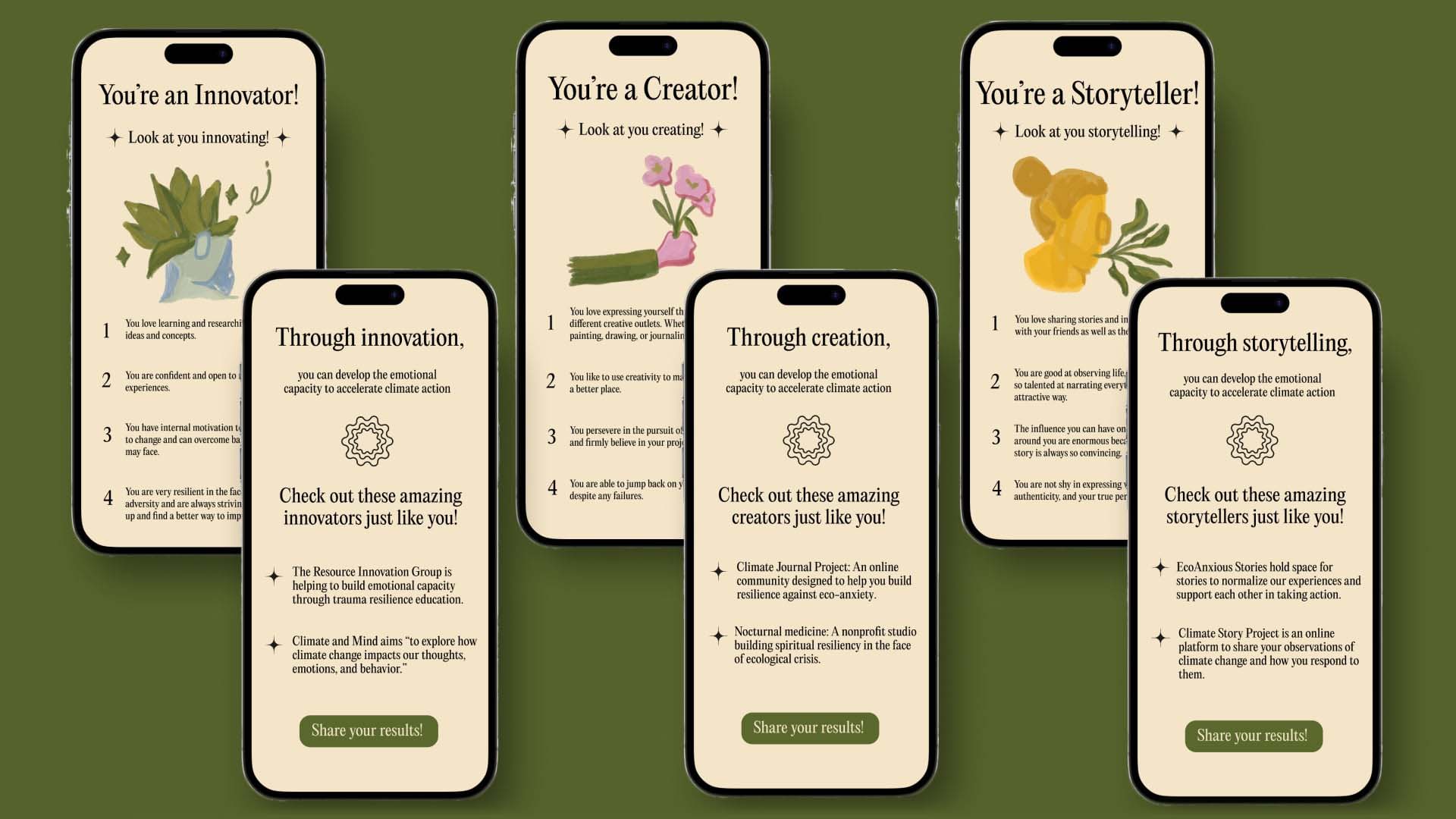
A platform to encourage community building
After completing the assessment, users are able to share their results on social media. Sharing normalises climate grief and opens up conversations within their social circles, as well as raises awareness about communities working to address climate grief.
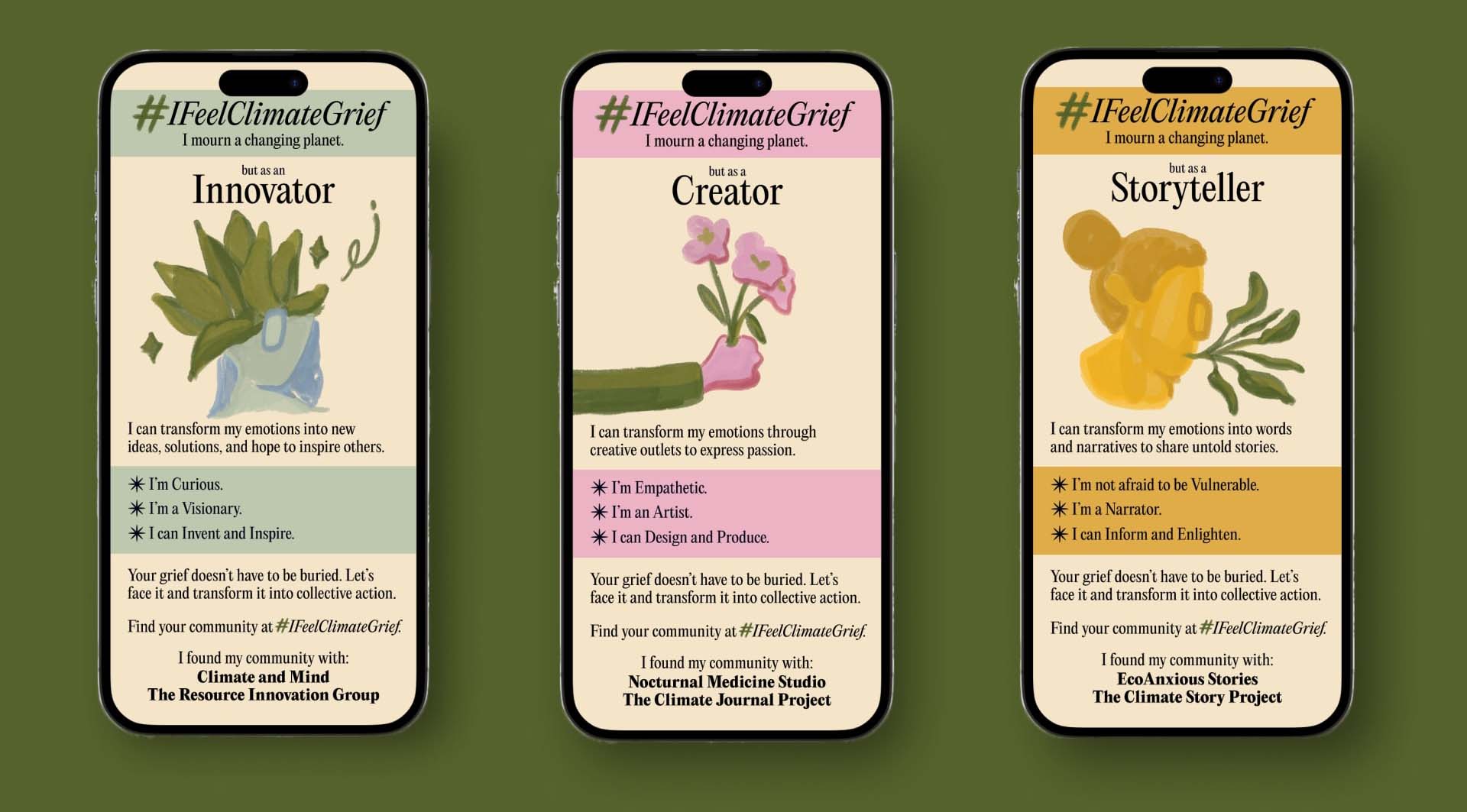
005:
The Future
Where do we go from here?
We have a series of ideas for further development of #IFeelClimateGrief in future. Beyond that, while you're reading this, I would like to emphasise that our future is being decided right now. People feeling grief for the planet means that they care and that they are paying attention. Let's support each other. As soon as we're not alone in these feelings, we can transform them into energised, passionate, collective change. Every collective action makes a difference for millions of people, communities, and ecosystems. The difference between the best future and the worst future is vast.

Kickstarting platform
We should build the website and encourage first users to share on social media. We have set up an #IFeelClimateGrief channel in the Climate Change Makers with over 250 members sharing stories and reflections of how the climate crisis has affected them. The channel can be a good starting base.
Community collaborations
We could partner with communities to understand their needs and acquire retention data to see which users are continuing to contribute to these communities so that we can improve the effectiveness of our matching system.
Merchandising opportunities
#IFeelClimateGrief merchandise has two-fold benefits. First, starting conversations in-person and further normalising climate grief through real life visibility. Second, to fund the upkeep costs of the platform.
006: My Takeaways and
Reflections

Adaptability Under Pressure
In the short timeline for this project, we changed our project idea and focus multiple times. I had good practice adapting to these complete shifts and to take advantage of the new opportunities that arose instead of lamenting abandoned work. To work efficiently, I learned to take on many different roles and work within changing team dynamics.

Moments to Breathe
As identified from our research, the topic was emotionally taxing. While reading countless stories of climate grief, I felt overwhelmed at times. These feelings were compounded by the short timeframe and pressure to complete the project. I learned to take necessary breaks to refresh my perspective, which allowed me to produce better work.
